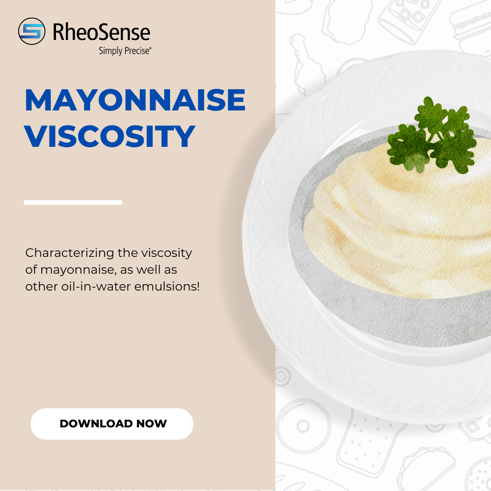Copyright © 2023 RheoSense, Inc.. All rights reserved. Terms and Conditions & Online Privacy

Food viscosity is a crucial factor that affects the taste, texture, and nutritional value of foods. It plays a vital role in food processing, consumption, and digestion. In this blog post, we'll explain what food viscosity is, why it matters, and how it affects our food experience.
What is Food Viscosity? Food viscosity is a measure of its resistance to flow, which depends on various factors such as composition, temperature, and shear rate. High food viscosity results in thicker and more viscous foods, while low viscosity leads to thinner and runnier foods.
Why Food Viscosity Matters? Food viscosity is a vital sensory attribute that affects how we perceive foods. The texture and mouthfeel of foods are largely influenced by viscosity. For example, the creaminess of yogurt, the thickness of sauce, and the smoothness of ice cream are all affected by viscosity. Moreover, viscosity can influence how well we digest food and absorb nutrients, as well as impact satiety and appetite.
How Food Viscosity Affects Nutrition? Food viscosity can affect the nutritional value of foods in several ways. Firstly, high viscosity foods tend to have a slower gastric emptying rate, leading to increased satiety and decreased hunger. Secondly, the viscosity of food can affect the absorption of nutrients. For example, the viscosity of oatmeal can affect the absorption of beta-glucan, a type of soluble fiber that can help lower cholesterol levels. Lastly, food viscosity can impact the glycemic index of foods, with lower viscosity foods leading to a faster and higher spike in blood sugar levels.
In conclusion, food viscosity is a crucial factor that affects the taste, texture, and nutritional value of foods. By understanding how viscosity affects our food experience, we can make more informed choices about the foods we consume. Additionally, food manufacturers can optimize their products' texture and nutritional value by controlling viscosity during processing.
Interested in viewing food viscosity data?
Check out our latest application note on Mayonnaise viscosity:
Copyright © 2023 RheoSense, Inc.. All rights reserved. Terms and Conditions & Online Privacy
No Comments Yet
Let us know what you think